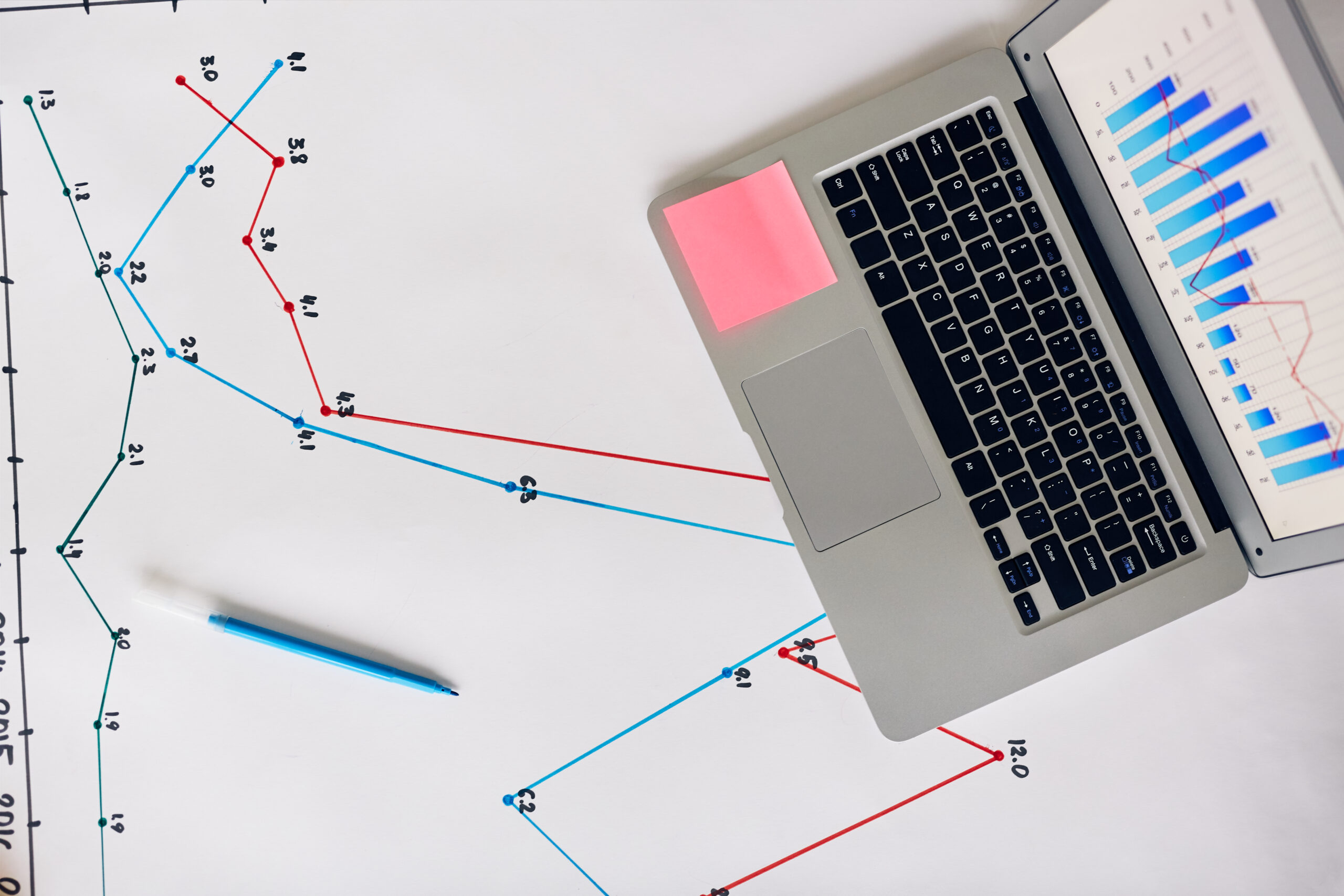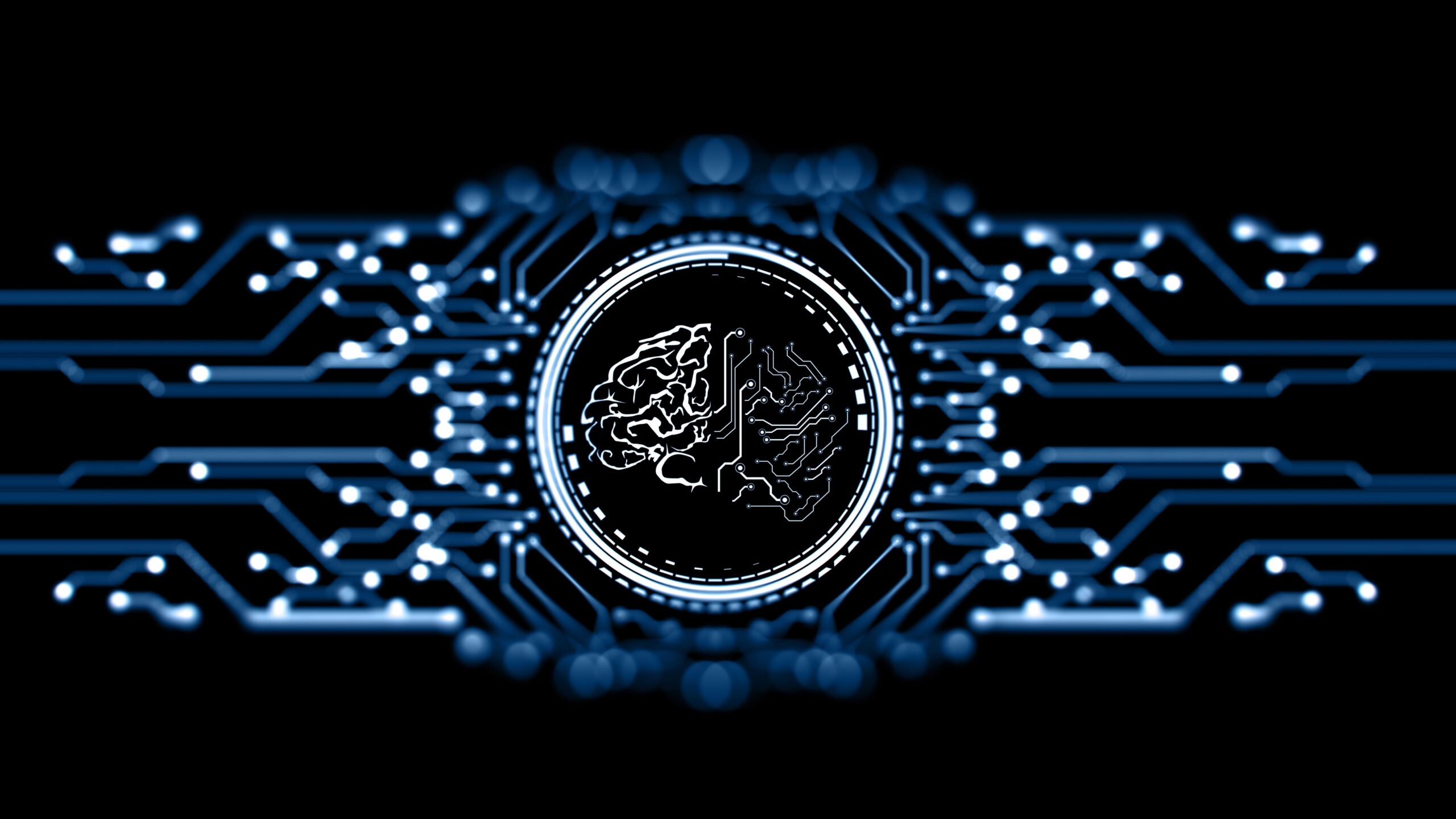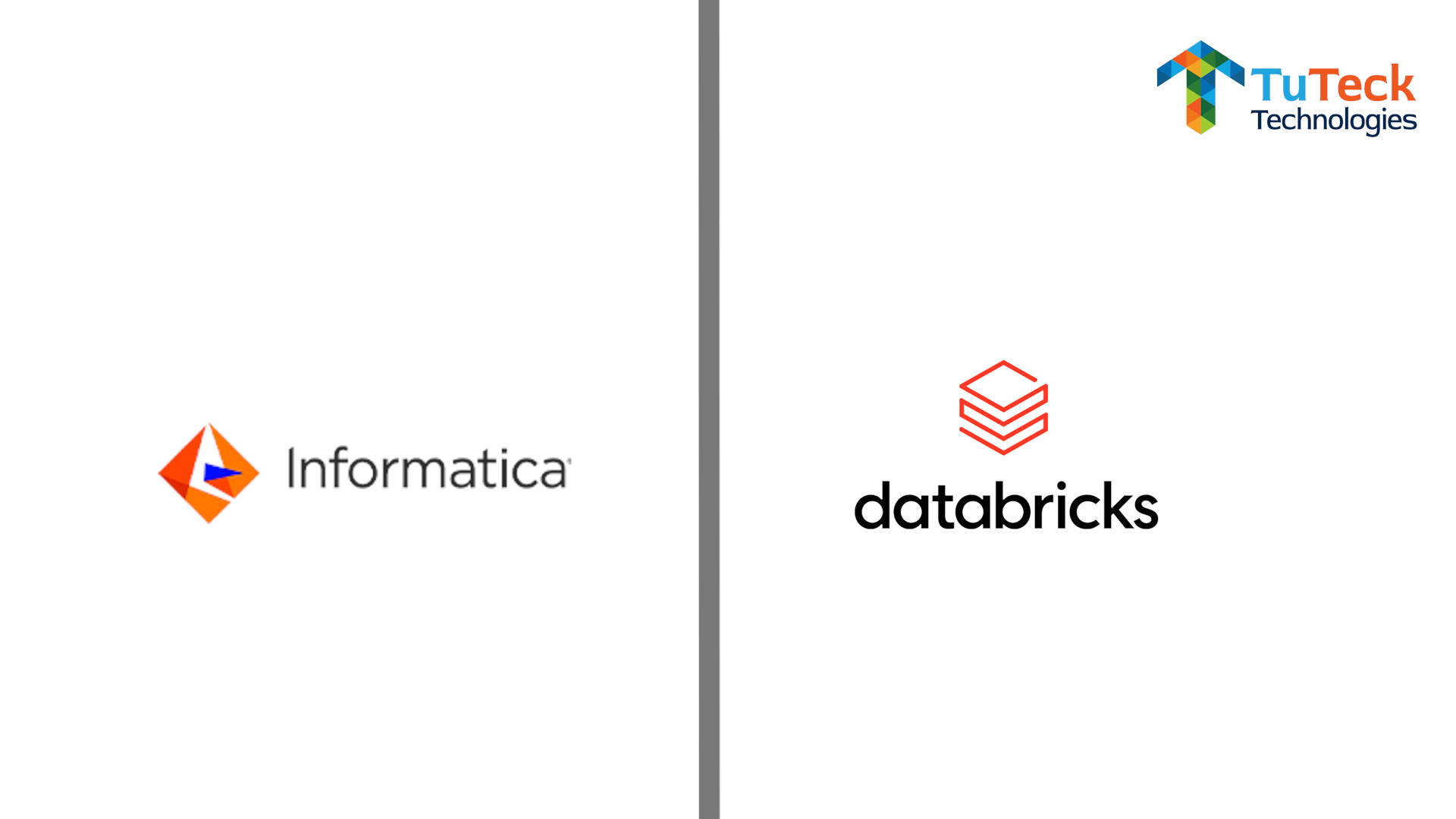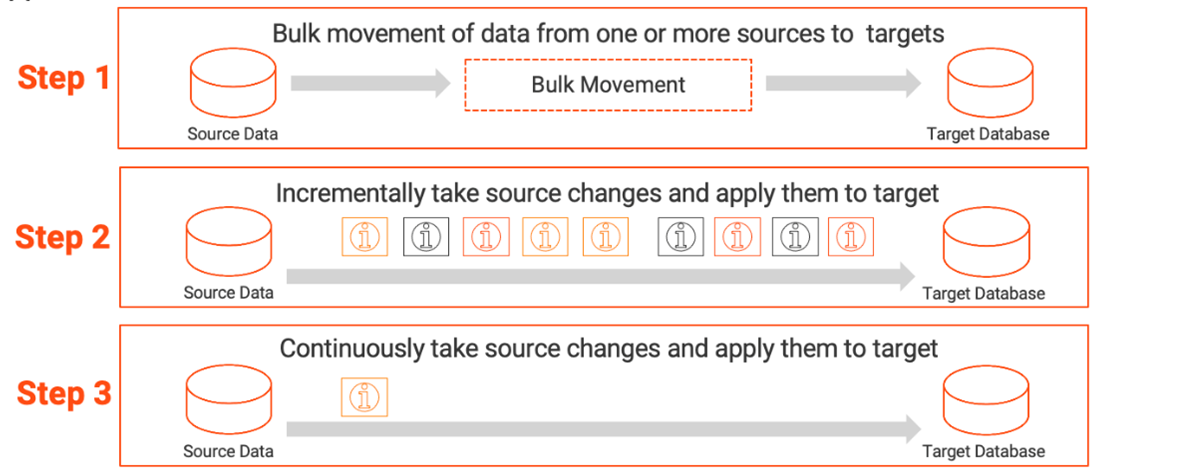Unlocking the Power of Data with Databricks and Informatica
Data architecture is like a plan for how a company handles its information. This plan includes how data is collected, where it’s stored, how it’s used, and how it’s kept safe. Imagine it as the design for organizing all the data a company has, kind of like a well-organized library for books.

In today’s world, where we have lots and lots of data, having a good plan for how to manage it is really important. This plan includes things like deciding where to put data, how to make sure it’s accurate and secure, and how to follow rules about how data should be used.
Think of data architecture as the map that helps a company make the most of its data. It’s like having a game plan for handling all the information a company deals with every day.
Your data architecture can make or break your business. To stay competitive, it’s crucial to upgrade your data architecture. Discover why Databricks and Informatica are your winning combination.

Data Lakehouse:
Data warehousing is like a super-powered brain for businesses in today’s digital world. It’s becoming increasingly important as a trend in data architecture, and here’s why it matters so much:
-
Centralized Data Hub:
Imagine if you had all your important books, documents, and notes neatly organized in one place. Data warehousing does just that for your business data. It gathers information from various sources across your company and stores it in a single, organized location. This means you don’t have to search all over the place when you need data; it’s all in one spot.
-
Reliable Data Quality:
Think of data warehousing as a friendly librarian who checks books for errors before they go on the shelves. Data here is cleaned, corrected, and made consistent. This means you can trust the data you find in your data warehouse. It’s like reading a well-edited book instead of one filled with typos.
Time Travel for Data: Data warehouses are like time machines for your data. They keep a record of how things have changed over time. This historical data is super useful because it helps you understand trends and patterns. It’s like having a diary of your business’s journey.
-
Smart Decision-Making:
In the business world, making decisions without data is like driving in the dark without headlights. Data warehouses provide bright insights. You can analyze all that historical and current data to make smarter decisions. It’s like having a GPS guiding you to the best route.
-
Fast Answers:
Data warehouses are built for speed. They can quickly retrieve data and provide answers to your questions. This is especially important when you need information on the spot. It’s like having a superhero that responds instantly to your requests.
-
Flexibility and Growth:
Businesses grow, and so does the data they generate. Data warehouses can grow with you. They’re flexible and can handle more and more data as your business expands. It’s like having a backpack that magically adjusts to carry more stuff.
-
Combining Data Sources:
In the real world, information comes from all sorts of places—like computers, the internet, and even physical sensors. Data warehouses can gather data from these diverse sources and put it all together. It’s like blending ingredients from different recipes to create a delicious dish.

But how exactly do Informatica and Databricks help with this process? Let’s look into it.
Imagine your company has a lot of important information scattered all over the place, like books, documents, and notes in different rooms. Informatica and Databricks work together to bring all this data into one organized hub, just like a librarian collects and arranges books neatly in a library.
But it’s not just about gathering data; it’s about making sure the data is trustworthy and accurate. Informatica acts like a careful librarian who checks books for errors before putting them on the library shelves. It cleans up, corrects, and makes the data consistent, so you can trust it, like reading a well-edited book without typos.
Now, Databricks adds a cool feature, where like a diary it records how things change over time. This historical data is super useful for understanding trends and patterns, helping you make smarter decisions.
Also, speed matters in business. Databricks makes sure you can quickly get the data you need and provides answers fast. As your business grows, the data you generate also grows. Informatica and Databricks can adapt to this growth.
Informatica and Databricks can gather data from various sources, like computers, the internet, and sensors, and combine it all to provide valuable insights for your business.
AI/ML Capabilities:
AI is becoming increasingly important for businesses. It’s powered by algorithms that can learn and adapt, potentially changing how companies operate. This technology has the potential to enhance processes, impact the workforce, and improve data infrastructure for smarter decision-making. In the past, data was often isolated, and decisions were made without the help of AI.

The Role of Big Data:
One of the key reasons for AI’s rapid growth is the availability of big data. In the past, AI struggled due to a lack of large and diverse datasets. Big data changed this by providing massive amounts of high-velocity data that AI algorithms could use to learn and make predictions. This data flood has allowed businesses to harness AI for process improvements and more informed decision-making.
Importance of Data Architecture:
Data architecture plays a pivotal role in making AI effective. It’s like the foundation of a house; without a solid foundation, everything can crumble. Well-structured data architecture sets the stage for AI to thrive. It ensures that data is organized, accessible, and compliant with regulations. This foundation is crucial for businesses looking to leverage AI and adapt to new technological opportunities.
The Expert’s Perspective:
Experts like William McKnight emphasize the significance of information architecture in navigating the evolving data landscape. They stress the need for organizations to embrace AI and data technologies while ensuring compliance with regulations like GDPR (General Data Protection Regulation). Data governance and management are vital components of this architecture.
AI and Data Management:
AI and data management go hand in hand. AI algorithms, including machine learning and deep learning, require high-quality data. A robust data architecture ensures that data is prepared and available for these algorithms to work effectively. This architecture should support the entire lifecycle of AI models, from development to deployment.
Cloud Computing’s Role:
Cloud computing is playing a significant role in the AI revolution. It allows data to be processed closer to its source, which is especially important in the age of the Internet of Things (IoT). Businesses are adopting a “cloud-first” strategy, and edge computing, where analytics happen closer to data sources, is on the horizon.
Apart from the role of AI/ML in Data Architecture, thus is how Informatica and Databricks help streamline the process:

Databricks is well-known for supporting AI and ML tasks. It provides a place where data scientists can work together to create, train, and use machine learning models on a large scale. This is vital for businesses that want to make decisions based on AI and ML.
Informatica, on the other hand, is great at collecting and copying data changes from different places like applications and databases. It moves these data-to-data lakes or data warehouses in real time. This helps AI and ML models get the most current data.
Informatica and Databricks can play a big role in making AI work better for businesses. Imagine you have lots of data like customer information, but it’s all messy and disorganized. Informatica can help clean up this data, making it neat and ready for AI to analyze. For instance, it can gather data from different sources, like your website and customer databases, and put it all in one place, just like organizing scattered puzzle pieces into a complete picture.
Now, let’s say you’re using Databricks, which is like an assistant for AI. It can take this cleaned-up data and help AI algorithms learn from it to make predictions. For example, it can analyze past sales data to predict which products customers might buy next, helping you stock your inventory more effectively.

Additionally, Databricks can work well with cloud computing, which is like having a powerful computer in the sky. It allows AI to process data faster and closer to where it’s needed. So, if you have sensors in your manufacturing machines collecting data, Databricks can analyze it in real time, helping you catch problems early and save money on repairs.
Moreover, Databricks can make AI systems that work hand-in-hand with people. Think of it as a helpful coworker who assists you in your tasks. For instance, it can analyze customer feedback and suggest improvements, making your customer service team more efficient.
Informatica offers a service called Change Data Capture (CDC). It allows data changes to be captured and sent to analytical systems right away. This makes sure that AI and ML models always have the newest data to work with.

Source | Informatica
Step 1:
Initially, Informatica CDC collects a large amount of data from various sources, like applications, databases, files, and streaming platforms (such as IoT and click streams). This data is then moved into Databricks Delta Lake, which is part of the Databricks Lakehouse platform.
Step 2:
After the initial data transfer, Informatica CDC focuses on identifying and capturing only the new or changed data from these sources. Instead of transferring all the data again, it only updates the information that has been modified.
Step 3:
Informatica CDC continuously monitors the source data for any ongoing changes. Whenever there’s new data or updates, it quickly captures and sends them to Databricks Delta Lake in real-time.
In summary, this process ensures that the data used by AI/ML models is always current, enabling these models to provide valuable insights and automation while helping organizations make faster and more informed decisions.
Data Fabric
![]()
Data Fabric is an important trend in Data architecture because it helps organizations deal with the challenge of managing data in a complex, interconnected world. Nowadays, data comes from various places, like in-house servers and the cloud. Data Fabric acts like a helpful guide that brings all this data together, making it easy to access no matter where it’s stored.
This technology not only simplifies data access but also makes organizations more adaptable to changes. It lets different teams access data easily while ensuring security and rules are followed. In a world where data is crucial for decision-making, Data Fabric is like a valuable tool that ensures data is trustworthy, visible, and accessible.
For example, think of a company with data scattered in different places. Data Fabric is like a knowledgeable librarian who finds and presents the right information when needed. This simplicity in handling data is vital for making good choices and staying competitive. That’s why Data Fabric is a top trend in data architecture today. Databricks and Informatica can work together to simplify the creation and management of a Data Fabric.
Informatica is skilled at gathering data from different sources and ensuring its quality and compliance. It can also capture real-time data changes. Databricks, on the other hand, offers scalable cloud-based solutions and provides a collaborative environment for data transformation and analytics. It is particularly strong in supporting AI and ML workloads.
By using these tools together, organizations can efficiently establish a Data Fabric that integrates diverse data sources, maintains data quality, processes data in real-time, and enables advanced analytics, ultimately facilitating better decision-making in a data-centric business environment.
In today’s ever-changing world of managing Data, three important trends have emerged: Data Lakehouse, AI/ML capabilities, and Data Fabric. Data Lakehouse helps companies store and analyze data efficiently, while AI and ML capabilities make it easier to get insights and automate tasks. Data Fabric ensures that data is used effectively, kept secure, and governed properly. It acts as the supporting structure that allows Data Lakehouse and AI/ML functions to work together cohesively. These are some of the ways in which Databricks and Informatica can assist with the process and are closely related to Data Architecture.
But why are we talking about this?
It’s because we’re excited to share that TuTeck Technologies has partnered with Databricks and Informatica to offer top-notch Data services. To learn more about our services, visit our website and stay ahead in the world of data management.
We are thrilled to announce that TuTeck Technologies has joined forces with industry leaders Databricks and Informatica to offer cutting-edge data services. As we’ve explored the evolving landscape of data architecture, including trends like Data Lakehouse, AI/ML capabilities, and Data Fabric, we are committed to providing top-notch solutions to help businesses thrive in this data-centric era.
https://lnkd.in/eBNDvkxm
To explore the full range of our data-related services, we invite you to click the “Data Services” button below (Insert Link). Additionally, if you’re interested in learning more about our esteemed partners and how this collaboration enhances our offerings, click the “Our Partners” button (Insert Link). Join us on this exciting journey as we stay ahead in the world of data management.
